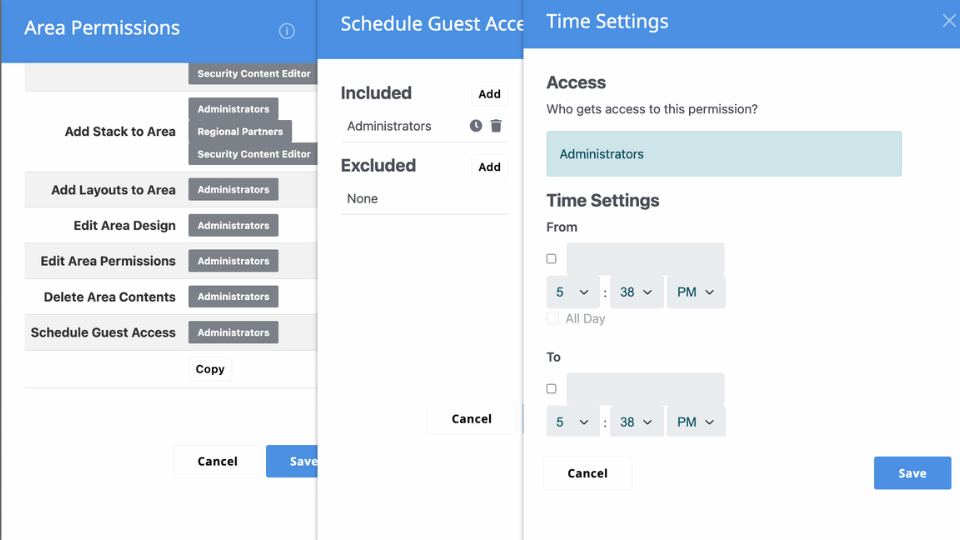
Smart Content Workflows
Structured Review & Approval, Built Right In
Trusted by the best
Keep your content clean, consistent, and compliant—every time.
Publishing content should be exciting, not stressful. Whether you're managing a busy marketing site, a government portal, or an internal knowledge base, Concrete CMS workflows give you the structured approval process you need to move fast—without breaking things.
Why Workflows Matter
Let’s face it: not every user should have the power to publish changes on their own. That’s where workflows shine. With Concrete CMS, you can ensure every edit goes through the right people before it hits your live site.
No more rogue updates. No more last-minute surprises. Just a clear, reliable process that scales with your team.
How Workflows Work
In Concrete CMS, workflows allow you to:
- Review and approve page changes before they’re published
- Customize approval steps for different types of content or teams
- Assign specific workflows to user groups with role-based permissions
- Track every action for full transparency and accountability
Once a workflow is set up, any change to a page or piece of content triggers an approval request. Editors can still do their job—reviewers just have the final say. That’s balance.


Build the Process That Fits Your Team
Whether you're a team of two or managing dozens of contributors across departments, workflows are built to match your organization’s structure.
- 🧩 Flexible Approval Paths: From simple single-step reviews to multi-tiered approvals, build a process that fits your internal policies.
- 👥 Role-Based Control: Apply different workflows to different user groups. Marketing can have one flow, legal another.
- 🕒 Scheduled Publishing Support: Combine with scheduled publishing to time your content launches perfectly.
- 🧾 Built-in Audit Trail: Every approval, rejection, and comment is logged—great for collaboration and compliance alike.

You need a CMS that saves you time.
Schedule a demo and tell us a bit about your project and we'll help you decide if Concrete CMS should be on your shortlist.
Frequently Asked Questions
A workflow is a predefined path that content changes follow before being published. In Concrete CMS, it's a way to ensure that edits go through the right people—like reviewers or department leads—before hitting the live site. It's your content safety net, helping teams collaborate without losing control.
Let’s say a staff writer updates a public service announcement on your city’s website. Instead of publishing immediately, the update gets sent to a communications officer for review. Once approved, the change goes live. That’s a simple one-step approval workflow—and you can make it as simple or complex as your process needs.
In general terms, workflows fall into three categories:
- Sequential workflows – Tasks are completed one after another in a specific order.
- State machine workflows – Tasks change based on state transitions, offering more flexibility.
- Rules-driven workflows – Conditional logic determines the next step, ideal for complex decision trees.
Concrete CMS primarily uses a sequential approval workflow, but it's flexible enough to handle more advanced configurations.
Every workflow is built around three essentials:
- Tasks or actions – What needs to be done (e.g., approve, reject).
- Participants – Who’s responsible at each stage (e.g., editor, reviewer).
- Triggers or conditions – What kicks off the workflow or moves it to the next step.
In Concrete CMS, this is all wrapped in a clean interface where you can assign workflows to user groups and content areas.
"5 things workflow" isn’t a standard industry term, but in practice, a strong content workflow often includes:
- Drafting
- Review
- Approval
- Scheduling
- Publishing
Concrete CMS lets you structure these steps to match your team’s needs—with clear checkpoints and full version tracking along the way.
Advanced workflows in Concrete CMS allow you to create multi-stage approval processes for your content. You can define each stage, assign reviewers, and automate notifications to ensure content is reviewed and approved systematically before publication.








